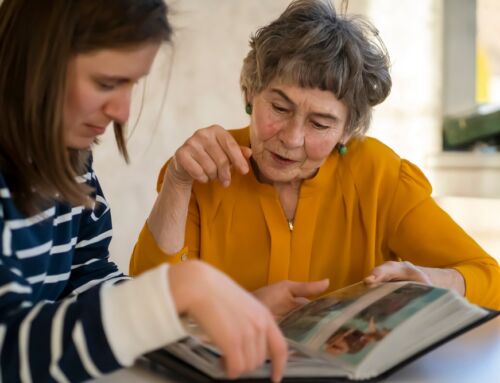In today’s made-to-order world, you can customize just about anything. Want your hamburger cooked medium with no ketchup and extra pickles? You got it. Want your new car to have a gray exterior, tan leather, a sunroof, and navigation system? No problem. Hey, we want things the way we want them! And that goes for senior living and long-term care as well. But a Johns Hopkins University study shows that while many people do have specific preferences when it comes to their care, they may not be receiving care in the way they desire.
>> Related: For Senior Living Decisions, Are You a Planner, Procrastinator, or Crasher?
Choosing the best care option
Researchers from the Department of Health Policy and Management at Johns Hopkins’ Bloomberg School of Public Health surveyed 1,783 seniors from the National Health and Aging Trends study, which was a national survey of Medicare beneficiaries age 65 and older. The participants were asked questions about long-term services and supports (LTSS) care.
To determine the seniors’ care preferences, the study’s interviewers described a hypothetical situation in which an 80-year-old, “Pat,” needs assistance with bathing, dressing, and getting around inside the home. The study participants then were asked to select the best care option for Pat among these choices:
- Living at home with help from friends and family
- Living at home with paid help
- Living with an adult child
- Living in an assisted living facility or continuing care retirement community (CCRC or “life plan community)
- Living in a nursing home
Since they were asking about the participants’ care preference indirectly using this hypothetical scenario, the interviewers hoped to determine the person’s true care preferences, regardless of their own current care arrangement (if any). Perhaps it would be easier to voice one’s true feelings about a theoretical situation than to ask a person direct questions about their feelings on their life’s reality.
>> Related: When Is It Time to Call in Care Reinforcements for an Aging Loved One?
Extrapolating findings from participants’ care decisions
A majority of those who took part in the Johns Hopkins study said that staying in the home was the best care option for “Pat.” That was to be expected as survey after survey finds that most seniors do want to remain in their own home for as long as possible. Only a small portion of respondents said that living in a nursing home or with an adult child was the best option for “Pat.”
There were several aspects of the researchers’ findings that were a bit unexpected, however. First, the fact that nearly a third of all survey participants felt that assisted living or a CCRC was the best solution for “Pat” came as a bit of a surprise. This large percentage is a change from past decades when remaining in the home with assistance from loved ones or paid help was the overwhelming preference.
Next, the research team found that respondents’ care preferences varied based on the senior’s own current care and living situation. Overall, an equal number (3 in 10) chose care in an assisted living or CCRC, care in the home with family help, and care in the home with paid help, as the best option for “Pat.” Notably, however, those survey respondents who themselves currently resided in assisted living or a CCRC were significantly more likely to choose option 4, “living in an assisted living facility or CCRC,” as the best choice for “Pat” as well.
There was another interesting, but somewhat concerning, finding in the study as well. Only 1 in 3 of the survey’s respondents who were themselves receiving care were in a care and living situation that matched their recommended solution for “Pat” (which presumably reflects their own preferences). This disconnect was more common among the oldest study participants, which might suggest a change in their care situation — or a change in care preference — over time.
>> Related: The Pain of Paying for Long-Term Care is Real; A CCRC Can Help
Make a plan to make your own care decisions
This study out of Johns Hopkins reveals that a majority of seniors — 2 out of 3 — are not receiving care services in their preferred setting or manner. It also solidifies another key point when it comes to senior living and long-term care: It is crucial that people make a plan to ensure they receive the type of care they prefer in the setting they prefer— ideally before they actually need assistance.
And herein lies one of the advantages of opting for a CCRC as your senior living choice. While enjoying the benefits of a maintenance-free home and numerous other services and amenities, CCRC residents can live an independent lifestyle for as long as they are able. But should the time come that they do require help with certain tasks, or even if they ultimately need full-time skilled nursing care, they are guaranteed access to a full continuum of on-site care services.
The decision to move to a CCRC when a senior is still in relatively good health puts them in the driver’s seat, allowing them to make self-determined decisions about how and where they will receive care, should they ever need it.
The fact that participants in the Johns Hopkins study who currently lived in a CCRC setting were significantly more likely to choose that as the preferable living and care option for “Pat” speaks volumes. Those folks clearly understand from first-hand experience the advantages that come with living in a CCRC!
Photo by Andrea Piacquadio via Pexels






